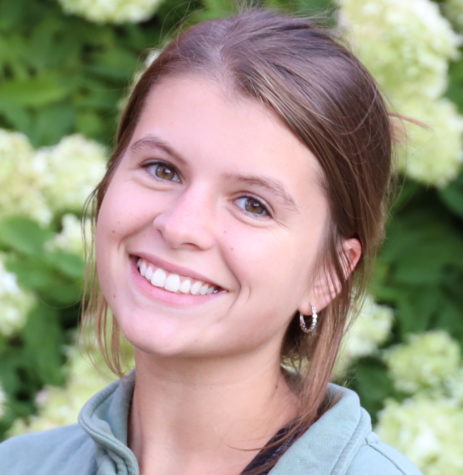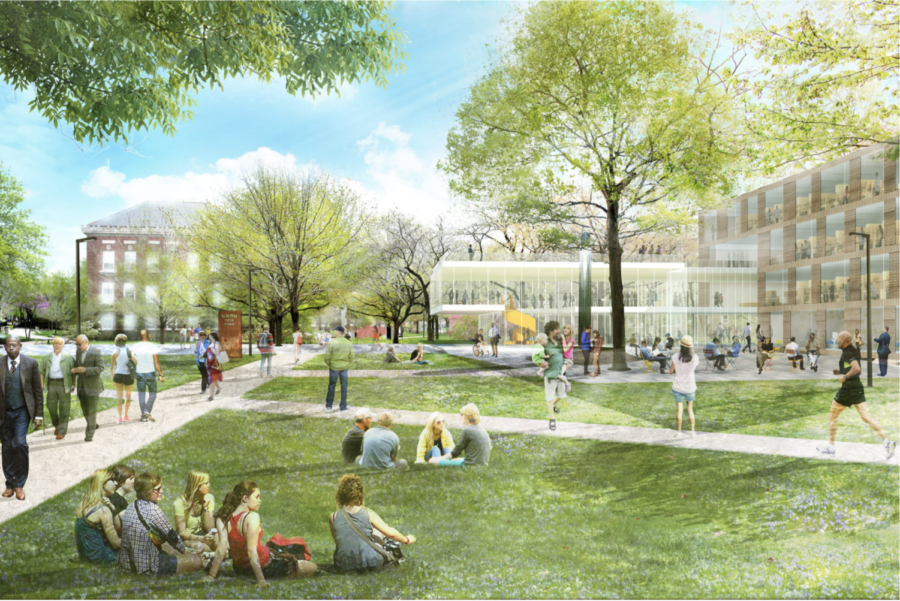New $300 million research building to replace Yost
CWRU’s 2018 Campus Master Plan shows a view of the Case Quad and the university’s proposed new research center (center right) replacing Yost Hall.
President Eric Kaler has made clear that his goal as president of Case Western Reserve University is to expand the research capabilities of the university. In order to do so, the university plans not only to increase the student population on campus, but to also build a new research facility on the Case Quad.
Over the course of the past academic year—Kaler’s first year at CWRU—major changes were announced to substantially increase the amount of students being admitted to campus, thereby increasing the inflow of tuition and allowing more funds for research purposes. These plans included the housing controversy last spring, where the president and his administration announced that housing would no longer be guaranteed for upperclass students due to the size of the incoming class of first-year students. Though the changes to housing policy were walked back, the plans regarding increased enrollment remained the same.
Plans for two new residence halls in the South Residential Village (SRV) also went into motion last year after delays due to the COVID-19 pandemic, now with an expected completion of fall 2024. While these were originally planned to take the place of a number of older residence halls for second-year students, they are now planned as a supplement to preexisting buildings due to the increased campus population.
With these plans in place, new research buildings are also in the works, including a $300 million project in the place of Yost Hall, which was originally built in the 1950s as residential space for the Case Institute of Technology. Yost is currently being used for administrative offices and classroom spaces and while some offices are expected to be moved to Adelbert Hall, it is unclear whether all staff will move there or if other spaces will be retrofitted, especially during the upcoming construction.
This new building, announced at an alumni philanthropy event, would be around 250,000 square feet—far larger than the current 50,000 square foot Yost. This new research center, originally envisioned and outlined in the CWRU master plan in 2018, was only to be around 170,000 square feet, but, with growing numbers of students and a renewed push toward research across all disciplines, that building plan has doubled.
Further, funding has grown quicker than originally anticipated, so plans for its expansion are much more feasible. The Cleveland Innovation District, a stimulus plan created by Ohio Governor Mike DeWine, has been a major proponent in this budget expansion. The university’s own Next Generation HealthCare Initiative has benefited greatly from the district’s funds, given CWRU’s history of medical breakthroughs.
This building was also chosen by the Clean Energy Smart Manufacturing Innovation Institute (CESMII) to be a hub of clean energy. This program is funded by the U.S. Department of Energy and works to increase the usage of data and more advanced sensors to make manufacturing more efficient. One of the reasons this location was chosen is because of the historically scientific nature of the Case Quad, as it used to be the home of CWRU’s predecessor, the Case Institute of Technology.
There is no current timeline of when this project will break ground and even less information on when it will be completed. For now though, the CWRU community is excited to see further improvements to the Case Quad and surrounding areas.

Grace (she/her) is a third-year student majoring in history and political science with minors in English and philosophy. In addition to her role at The...


